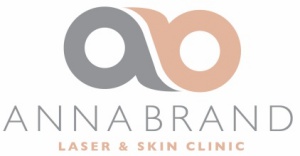*How does the ND Yag remove the tattoo?
The laser breaks down the ink particles in the tattoo. The broken down ink is then absorbed by the body and carried out through the body’s lymphatic system.
*How many treatments will it take to remove a tattoo?
On average, tattoos require 8 – 12 sessions, with the session being 8 – 10 weeks apart. The amount of time required for the removal of a tattoo and the success of the removal varies with each individual. Factors influencing this include: skin type, location, colour, amount of ink, scarring or tissue change, and layering.
*Can you have it sooner than 8 – 10 weeks apart?
Treating more frequently than 8 – 10 weeks increases the risk of adverse affects on the skin and does not necessarily increase the rate of absorption. At each session, some but not all of the tattoo pigment particles are effectively fragmented, and the body removes the smallest fragments over the course of several weeks. The result is that the tattoo is lightened over time. Remaining large particles of tattoo pigment are then targeted at subsequent treatment sessions, causing further lightening. The number of sessions and spacing between treatments depends on various factors, including the area of the body treated and skin colour. Tattoos located on the extremities, such as the ankle, generally take longest. As tattoos fade, we may recommend that clients wait many months between treatments to facilitate ink resolution and minimize unwanted side effects. If you treat your tattoo too frequently, the laser is simply targeting the ink that it has already been fragmented but that your body hasn’t had enough time to remove completely.
*Can I buy just one treatment at a time?
Yes, you can buy one treatment at a time.
*Is there a consultation fee?
No, I don’t charge for the consultation, but if you choose to go ahead with the treatment, I will take a £20 deposit to secure your appointment.
*Does the laser remove coloured tattoos?
Dark (blue, black) and red inks will resolve the best. Oranges, purples and yellows usually fade as well. Green inks are the most difficult to remove, and additional treatments are needed to produce significant fading.
*Will the tattoo completely disappear?
In many cases, yes. Greater than 95% fading of the tattoo may be accomplished. However, it is important to know that there are many types of tattoo inks in use worldwide today. Not knowing which tattoo ink was used, or how deeply it was applied, makes it impossible for the technician to predict the degree of removal on any given tattoo.
*Is it painful?
Yes it is painful. It feels similar to a snap of a hot rubber band, or grease spitting at you when you’re frying something.
*Will I see a change after each treatment?
Everyone responds at a different rate. Most people will see a difference with every treatment over the 8 to 10 week period. Having a before photo available to look at helps when there is only a slight change.
*What do I need to do before my appointment?
Avoid Alcohol, Aspirin, Aleve, Motrin, or ibuprofen products.
*What type of post treatment care is needed?
Aloe Vera gel will be applied directly after the treatment has been done. During the healing process, apply Miracle Oil to the area 2 – 3 times a day. If it has a burning sensation, you may apply an ice pack or something cold from the freezer. The treated area should be kept clean. A shower can be taken, although the treated area should never be scrubbed. If a scab forms it is vital that you do not pick it or scratch it. Occasionally, there will be pinpoint bleeding associated with the treatment. We ask that you do not cover the area with anything, let air get to it. You may also get blisters associated with this treatment, this is perfectly normal. If that occurs, please protect the blisters, let them heal as naturally as possible. Do not pop the blisters. Avoid sun exposure and tanning beds during the healing process.
*With Laser Tattoo Removal Should I be worried about “radiation” to my skin?
NO. LASER stands for Light Amplification by the Stimulated Emission of Radiation. There are two basic types of radiation, (1) Non- ionizing radiation, and (2) Ionizing radiation. Hair removal lasers and tattoo removal lasers produce “non-ionizing” radiation which is simply the radiation of light. Ionizing radiation which represents x-rays, ultra-violet and nuclear radiation is a completely different type of radiation, and is not produced by hair and tattoo removal lasers.
